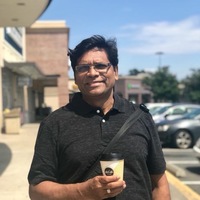
Piphal Heng
I currently a postdoctoral scholar at UCLA-Cotsen Institute of Archaeology. I received my degree in archaeology from the Cambodia's Royal University of Fine Arts in 2002 and my MA and PhD degree in Anthropology from the University of Hawai‘i at Mānoa (2018). I was a ACLS-Robert H. N. Ho postdoctoral fellow at the Center for Southeast Asian Studies & Department of Anthropology, Northern Illinois University from 2019 to 2021. My archaeological research themes include religious change, urbanism, settlement patterns, political economy, and sociopolitical organizational shift. I am also interested in the intersection between heritage management, collaborative/public archaeology, knowledge production, and urban development. My current project explores the transformation of urban and rural settlements in response to the demographic and political changes that took place with the adoption of Theravada Buddhism in Angkor (14th-18th century Cambodia).
less
Related Authors
Sotheara Vong
Royal University of Phnom Penh
hien sopheaktra
University of battambang
Sereyrath Em
University Of Cambodia
C U RAO
Jawaharlal Nehru University
Elevator & Generator Supplier_Cambodia
University of Cambridge
Louisa J . M . Jansen
Food and Agriculture Organization of the United Nations (FAO)
InterestsView All (9)









Uploads
Papers by Piphal Heng
https://authors.elsevier.com/c/1bZ8C8MrPs63pY
The Angkorian Empire was at its peak from the 10th to 13th centuries CE. It wielded great influence across mainland Southeast Asia and is now one of the most archaeologically visible polities due to its expansive re- ligious building works. This paper presents archaeobotanical evidence from two of the most renowned Angkorian temples largely associated with kings and elites, Angkor Wat and Ta Prohm. But it focuses on the people that dwelt within the temple enclosures, some of whom were involved in the daily functions of the temple. Archaeological work indicates that temple enclosures were areas of habitation within the Angkorian urban core and the temples and their enclosures were ritual, political, social, and economic landscapes. This paper provides the first attempt to reconstruct some aspects of the lives of the non-elites living within the temple enclosures by examining the archaeobotanical evidence, both macroremains and phytoliths, from residential contexts and data derived from inscriptions and Zhou Daguan's historical account dating to the 13th century CE. Research indicates that plants found within the temple enclosure of Ta Prohm and Angkor Wat were grown for ritual or medicinal use, and also formed important components of the diet and household economy.